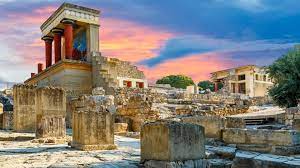Knossos Palace
Knossos Palace is one of the most popular tourist destinations in Crete. It is located about 5 km south of Heraklion, and can easily be reached by car or bus. The palace was first built during the Neolithic period, but it saw its greatest expansion during the Minoan period. Knossos was the largest and most important palace of the Minoan civilization. Today, visitors can explore the ruins of this fascinating ancient palace, as well as learn about its history and significance. Tickets and prices are easy to find online – read on for more information!
Knossos: A Fascinating Mythical Palace
The ruins of Knossos palace are fascinating for a number of reasons. For one, the palace is incredibly well-preserved, and offers a glimpse into the lives of the Minoans. Additionally, the palace was considered to be a magical place – it was here that King Minos kept the legendary Minotaur in a labyrinth. Finally, Knossos was also the birthplace of Linear A writing, which is still not completely understood. If you’re interested in ancient civilizations or history, Knossos palace is definitely worth a visit!.
What makes Knossos so impressive to historians is that it was not simply a residence for a royal family – it was also a center of government, commerce, and culture. The palace was home to many workshops where craftsmen produced goods for trade with other parts of the Mediterranean. And thanks to its location near the coast, Knossos also served as an important port city. All this combined makes Knossos one of the most significant archaeological sites in Europe.
A Journey to Minoan Period
The Minoan period is named after the legendary King Minos, who is said to have ruled the island of Crete during this time. The Minoan period is often considered to be the golden age of Crete, and it is during this time that the Knossos palace was built. The palace was a vast complex of buildings and courtyards, and was used as both a residence and a government center. It is believed that the palace was destroyed by a volcanic eruption in 1450 BC, but much of its art and architecture has been preserved and can still be seen today.




